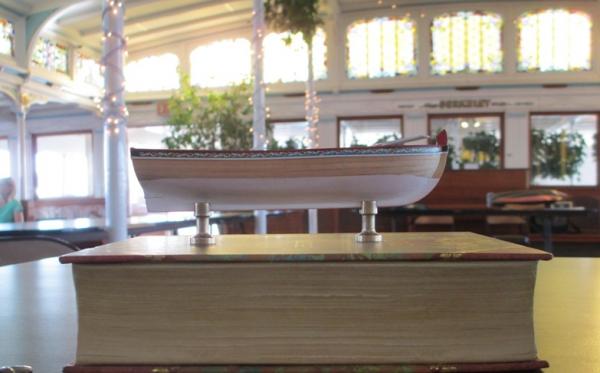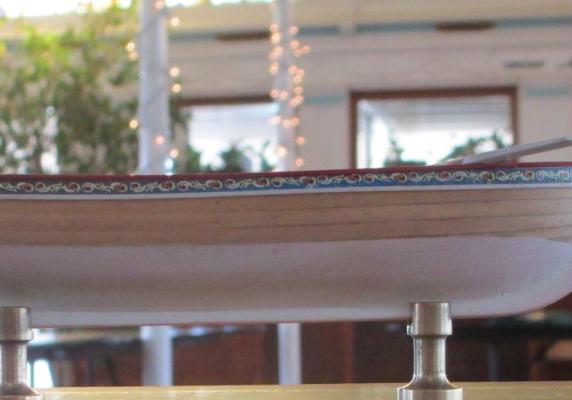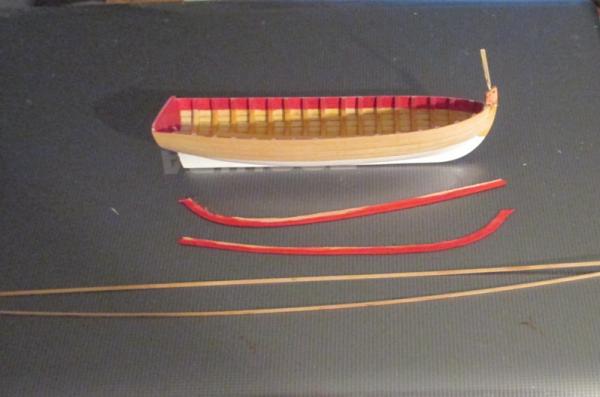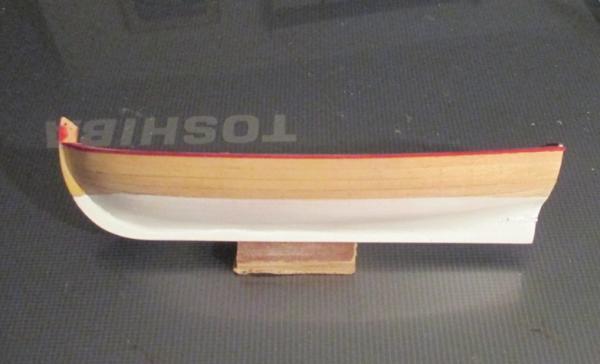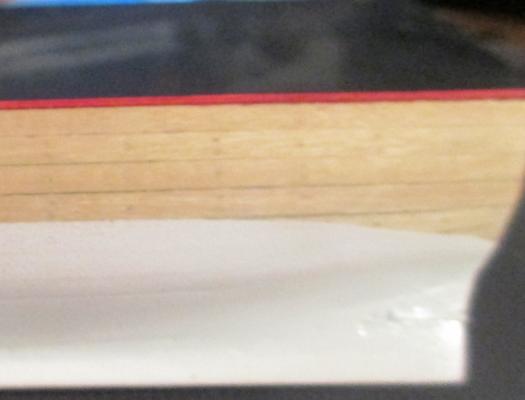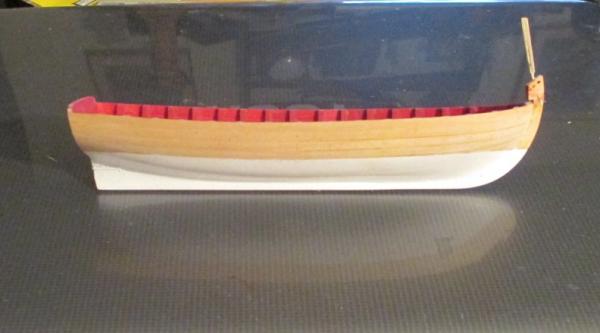-
Posts
1,876 -
Joined
-
Last visited
Content Type
Profiles
Forums
Gallery
Events
Everything posted by Chuck Seiler
-
Maury, What changes did you make?
- 74 replies
-
- 18th century longboat
- model shipways
-
(and 1 more)
Tagged with:
-
I think the Longboat would look GREAT coppered.
- 100 replies
-
- model shipways
- 18th century longboat
-
(and 1 more)
Tagged with:
-
Are there any issues with the MOROPE stretching out of shape over time?
- 234 replies
-
- 18th century longboat
- model shipways
-
(and 1 more)
Tagged with:
-
Robbyn, One option for planking to consider is the "garboard to sheer" option. BobF and Toni Levine did this with great success. Starting at the garboard and working your way to the sheer strake as opposed to doing 2 at the top, 2 at the bottom and working your way to the middle, as Chuck has it in the instructions. I say this because I had all sorts of trouble with the final plank. (Of course if I had measured better, I may not have had the trouble.) Using a bit of wood filler and keeping it below the waterline so I could paint over it was my salvation in that regard. By doing this, however, you have to come up with some method to support the upper bulkheads until the planking is complete. Easy peasy.
- 234 replies
-
- 18th century longboat
- model shipways
-
(and 1 more)
Tagged with:
-
Oh yeah/....Welcommen to the build.....
- 234 replies
-
- 18th century longboat
- model shipways
-
(and 1 more)
Tagged with:
-
Robbyn, Before you get started in earnest, I would STRONGLY recommend drilling a small hole down the top of the stem piece and inserting a small treenail/down/peg. Because of the way the grain runs, this part is very fragile and is prone to breaking off. Option 2: Glue a long piece of thread to it so you can find it when it breaks off.
- 234 replies
-
- 18th century longboat
- model shipways
-
(and 1 more)
Tagged with:
-
I had a lot of trouble with the strake or two north of the garboard strake. In retrospect, edge bending like Chuck and BobF did would have helped significantly. I loop forward to see your progress.
- 74 replies
-
- 18th century longboat
- model shipways
-
(and 1 more)
Tagged with:
-
I was mistaken. I used Pau Marfin, not Boxwood. It edge bends easier.
- 74 replies
-
- 18th century longboat
- model shipways
-
(and 1 more)
Tagged with:
-
I used boxwood as well. I did not have any issues with the sheer strake, although I may have had to slightly spile the one below. However, given the problems I had with the planking in general, I will defer to you ad Toni.
- 74 replies
-
- 18th century longboat
- model shipways
-
(and 1 more)
Tagged with:
-
Mike, Looking good. I see Hewitt talked you into putting the horse below the tiller.
- 55 replies
-
- 18th century longboat
- model shipways
-
(and 1 more)
Tagged with:
-
Maury, Welcome to the build!!!! I am surprised you said you spiled the top planks. IIRC the top (sheer) plank goes in as is-unspiled. I do not recall doing anything special for plank 2 either.
- 74 replies
-
- 18th century longboat
- model shipways
-
(and 1 more)
Tagged with:
-
Bob, Many thanks. I will experiment with my current project. Since it will have inner planking as well, any glitches can be forgiven.
- 277 replies
-
- model shipways
- 18th century longboat
-
(and 1 more)
Tagged with:
-
Thanks Bob. This could help in another project I am working on. I will experiment with what I have...and keep an eye open for other options.
- 277 replies
-
- model shipways
- 18th century longboat
-
(and 1 more)
Tagged with:
-
Bob/Toni, Are those Harbor Freight sanding disks or dremel?
- 277 replies
-
- model shipways
- 18th century longboat
-
(and 1 more)
Tagged with:
-
I have done more modeling than I have model photography. I took this pic t our Model Guild meeting. Friese and lower rubrail added. Here is a look at a proposed mounting scheme. Most people are using wire or thin tubing. As a contrarian, I am going with clunky. Whadya think? Book is not part of the base.
-
I think Mike is too busy working on FLY. We may have to strong arm him.
- 55 replies
-
- 18th century longboat
- model shipways
-
(and 1 more)
Tagged with:
-
I forgot to mention...based on the care I am taking with the cap rail, I do not intend to paint the edge of the cap rail white. I thought about painting a 1/32" white line below the cap and above the friese. If I had decided to do this, I would have painted the top of the gun'l a bit more than the 1/32 inch BEFORE I applied the cap rail, thus giving a crisp line. The friese would have been applied so that the 1/32" white stripe showed. Maybe next time.
-
Since my past efforts to tape and paint without seepage on this hull have proven non-good, I decided to do something else for the top rail. Using red Trans Tint water based (or alcohol based) wood dye, I dyed the under side lip of the cap rails. My initial plan was to use two 1/16" x 1/16" lengths of wood. These would be attached side by side, bent along the whole length of the gun'l so that the wood grain would be always running with the cap rail. Once added, I would have sanded it down to 1/32 thick and as wide as it needed to be. I decided NOT to do that because it did not provide the little flare on the bow. Port side cap rail added. The water based/alcohol based dye does not interfere with gluing. A closer look. You can see how much crisper the demarcation line is versus that of the water line. I will eventually paint with caboose red on upper and side portions, but leave undersides untouch (and hence, unboloxed up).
-
Holy Cow! Talk about pre-planning.....I'm impressed. Hello Kurt. It's good to see you again.
- 75 replies
-
- 18th century longboat
- model shipways
-
(and 1 more)
Tagged with:
-
Bob, My efforts to fix the problem proved how true your statement is. I drilled a pilot hole in the piece that was to be glued BEFORE I glued it. Once the glue had dried 24 hours, I used my pin vise to drill the hole the rest of the way into the stem. The stem piece broke again; not a the glue joint, but above it. Apparently the force of the drill pushing into the wood (opposite reaction-pushing up on the stem piece) lifted it right off. All should be well now.
-
Great job Toni! Hopefully you are getting a case/dust cover for it. What is your next project?
- 75 replies
-
- 18th century longboat
- model shipways
-
(and 1 more)
Tagged with:
-
Len Superb work. I will need to go back and spend more time on this. I really like how you did the transom castings.
- 122 replies
-
- bellerophon
- victory models
-
(and 1 more)
Tagged with:
About us
Modelshipworld - Advancing Ship Modeling through Research
SSL Secured
Your security is important for us so this Website is SSL-Secured
NRG Mailing Address
Nautical Research Guild
237 South Lincoln Street
Westmont IL, 60559-1917
Model Ship World ® and the MSW logo are Registered Trademarks, and belong to the Nautical Research Guild (United States Patent and Trademark Office: No. 6,929,264 & No. 6,929,274, registered Dec. 20, 2022)
Helpful Links
About the NRG
If you enjoy building ship models that are historically accurate as well as beautiful, then The Nautical Research Guild (NRG) is just right for you.
The Guild is a non-profit educational organization whose mission is to “Advance Ship Modeling Through Research”. We provide support to our members in their efforts to raise the quality of their model ships.
The Nautical Research Guild has published our world-renowned quarterly magazine, The Nautical Research Journal, since 1955. The pages of the Journal are full of articles by accomplished ship modelers who show you how they create those exquisite details on their models, and by maritime historians who show you the correct details to build. The Journal is available in both print and digital editions. Go to the NRG web site (www.thenrg.org) to download a complimentary digital copy of the Journal. The NRG also publishes plan sets, books and compilations of back issues of the Journal and the former Ships in Scale and Model Ship Builder magazines.



